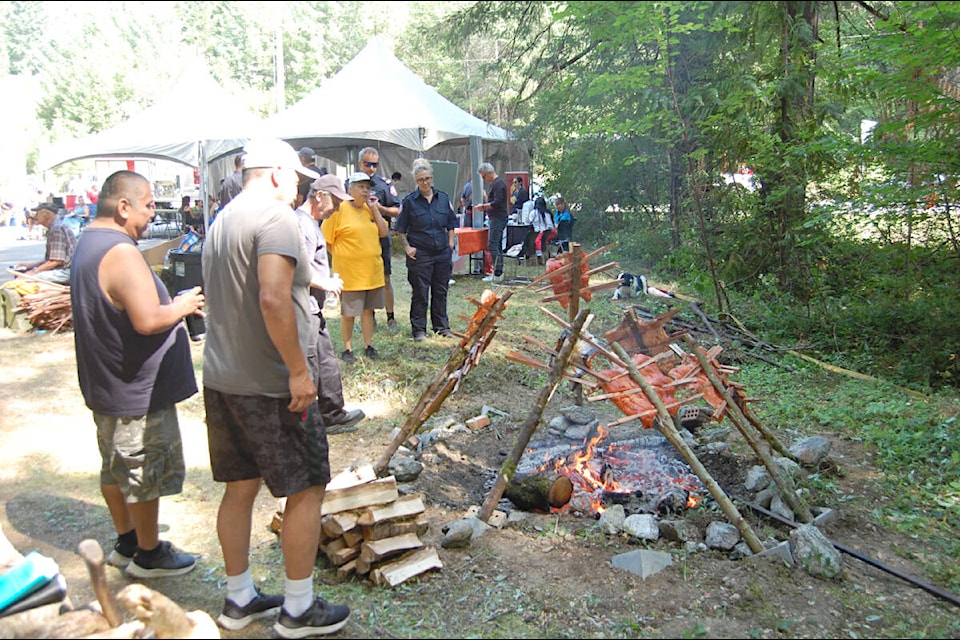Funding received by the New Pathways to Gold Society (NPTGS) last fall will help the organization rebuild and reconnect with communities along the Hope to Barkerville corridor, says Don Hauka, creative/communications director for NPTGS.
The society received $92,070 in funding from the Community Services Recovery Fund (CSRF), a one-time $400 million investment from the Government of Canada to support charities and non-profits as they adapt their organizations for pandemic recovery.
“This federal funding will help NPTGS re-engage with Gold Rush/Spirit Trails Communities from Hope to Barkerville hit hard by the COVID-19 pandemic,” said NPTGS co-chair Brent Rutherford in a statement. “These funds will greatly assist the society in adapting and finding new and better ways to make the difference in Indigenous and non-Indigenous corridor communities.”
Hauka says that the society had already started work on rebuilding, through initiatives such as the Cedar-Bamboo Relationship (CRB) and the First Fish Ceremony. The CRB refers to the partnerships formed between Chinese settlers and Indigenous communities during the 19th and 20th centuries, when both communities faced legal and social discrimination, and includes the relationships formed between Spuzzum First Nation and Chinese settlers, who laboured together to build the first Alexandra Bridge near Spuzzum in 1862.
The First Fish Ceremony is a millennia-old tradition of Spuzzum First Nation, and celebrates the gift of abundance provided by the annual return of the salmon at a special site where the Fraser River squeezes through a rocky narrows and provides some of the best fishing sites in the Fraser Canyon.
The CSRF is designed to help community service organizations — including charities, non-profits, and Indigenous governing bodies across Canada — support recovery in their communities. It will help organizations adapt and modernize their operations to grow their support in communities.
“This funding will enable NPTGS to move ahead with our vision of a Gold Rush/Spirit Trails corridor that’s been reinvented in the spirit of Indigenous reconciliation and multiculturalism,” says Chief James Hobart, NPTGS Indigenous co-chair. “We’re committed to building local economies by developing Indigenous and heritage assets and infrastructure using these core principles. The Community Services Recovery Fund is going to help us achieve that goal.”
“It’s all part of reconnecting with all communities, Indigenous and non-Indigenous,” says Hauka. “Another good thing about this pot of money is that it will help us re-focus and reinvent how we approach fundraising and communications by adapting and modernizing our programs and services.
“We’ve always really valued in-person connection, and prior to the pandemic it was all in-person meetings and we’d go all over the corridor. We can still do that, but we’ve seen the value of being able to connect via Zoom and Teams. More virtual meetings bring people together through this extremely large corridor, and we can also look at social media channels and make more extensive of all these channels so we can get the maximum impact.”
For the 2023 First Fish Ceremony, NPTGS teamed up with Connect Media to provide coverage of the event and livestream the July 29 ceremony. Hauka says the society wants to do more on YouTube and Facebook.
“It’s a very exciting thing to be able to look at this. We have this capacity that government has helped us get, and can now develop overall plans and a strategy. We have needed this money for these purposes, for boots on the ground, but this is a program that allows us to engage with people in their communities. We can see what their needs are and how our projects can help them, and that’s a great thing. We’re very grateful that we’ve been given this opportunity.”
